AMD Entry-level PC
A year ago our entry AMD was single-core, last December 40% less money bought a 2.6GHz dual-core system, and today's AMD entry system uses a Black Edition unlocked 2.7GHz dual-core that costs a few dollars less than our choice just three months ago. That is certainly increased value in an economy that forces most buyers to look closely at price. With memory so cheap we have continued our recommendation of 4GB at a kit price of just $37. You can go with 2GB and save $18, but that money is well spent in doubling memory. The hard drive remains at 500GB.
| AMD Entry-level PC | ||
| Hardware | Component | Price |
| Processor | Athlon 64 X2 7750 Kuma 2.7GHz Black Edition (2.7GHzx2 95W 2x512KB L2) |
$60 |
| Cooling | CPU Retail HSF | $- |
| Video | On-Board | $- |
| Motherboard | ASRock A780GXE/128M 780G | $80 |
| Memory | G.Skill 4GB (2x2GB) DDR2-800 | $37 |
| Hard Drive | WD Caviar GP WD5000AACS 500GB | $60 |
| Optical Drive | Samsung 22X DVDRW/DL SH-S223Q | $25 |
| Audio | On-Board | $- |
| Case | SIGMA La Vie ABWBP Black Aluminum/ SECC ATX Mid Tower with 500W Power Supply | $60 |
| Power Supply | Included with Case | $- |
| Base System Total | $322 | |
| Display | Hanns-G HB-175APB Black 17" 8ms Widescreen LCD Monitor Built in Speakers - Retail (1440x900) | $99 |
| Speakers | Built into Monitor | $- |
| Input | Microsoft CA9-00001 Black PS/2 Standard Keyboard and Optical USB/PS2 Mouse - OEM | $16 |
| Operating System | Microsoft Vista Home Premium OEM | $99 |
| Complete System Bottom Line | $536 | |
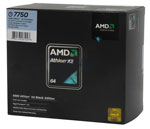 |
Prices on all processors are continuing to drop in the face of the aggressive pricing strategy adopted by Intel in entry to upper midrange processors. The $60 AMD 2.7GHz dual-core is a faster CPU at a slightly lower price than our December guide. Not only is it faster but it's also a Black Edition (unlocked) CPU. Most have been easily running at 3.0GHz just by increasing the multiplier. If you want even more power the Phenom 8750 triple-core Black Edition is a good value for just $44 more ($104). However, for most users the Athlon 64 X2 7750 provides plenty of power for an entry system. If you're counting pennies you could drop down to a single-core 2.6GHz Orleans 45W processor for $42 and save $18.
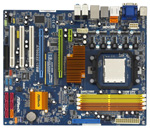 |
The 780G chipset is one of the best budget IGP designs we have worked with over the years. This is the chipset that made integrated graphics relevant again. One of the best boards in this price category is the ASRock A780GXE. The A780GXE features AMD/ATI Radeon 3200 integrated graphics. ASRock loads the board with six 3Gb/s SATA ports featuring RAID 0/1/10, 5.1 HD Audio, Gigabit LAN, two PCI-E x16 slots, one PCI-E x1 slot, three PCI slots, and support for 16GB of memory. Durability is addressed with solid capacitors for CPU power and duracap long-life capacitors for the rest. This board has been rock solid for us and supports AM2/AM2+ and the newest AM3 CPUs. The A780GXE has 128MB of sideport memory for additional performance. It fully supports the 140W Phenoms, and it can do dual x8 CrossFire. The A780GXE used to be a $100 board, so it is a good value at the current $80 price. It is ATX format, and ASRock also manufactures the A780FullHD motherboard, which at $57 may be a better choice for those pinching pennies. However, the extra performance of sideport memory and the better chipset for the $23 price difference is worth it in our opinion.
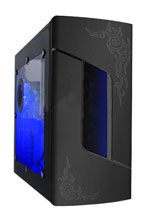 |
The case and power supply are the Sigma 500W La Vie mid-tower. This case and power supply are currently on sale after a $25 rebate for $40. Sigma makes both decent cases and decent power supplies that are sold separately. While no one will mistake this case/PSU combo for one of the premium Sigma offerings, it is still good quality and good value for a very reasonable price. Even if you pay the regular price of $60 to $65 you will get good value in this combo. We have built several entry systems with the Sigma case and PSU and had good results and stable performance. The only caveat is to check out the case when it arrives as shipping can take its toll on the case front door.
If you prefer a smaller case to mate with your Micro ATX motherboard the HEC 6K28BSOH48D Micro ATX mini-tower used in the Intel entry system is a good choice. It is a solid small case with a power supply from HEC, which is one of the world's best PSU makers. You should generally go for the best case and power supply you can reasonably afford, so you should also look at the cases and power supplies recommended for more expensive systems if you plan to keep your case/PSU and merely upgrade other components in the future.
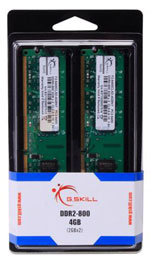 |
With DDR2 prices so very low, we went for 4GB of DDR2-800 this time. This is double last year's entry recommendation for less than half the price. This 50% to 75% drop in DDR2-800 memory prices in the past year is why you're not seeing much memory advertising these days. RAM prices as a whole are certainly in the commodity category as of late. We recommended the G.Skill 4GB DDR2-800 CAS 5 kit, but you could just as easily choose OCZ, Kingston, Corsair, Crucial, Geil, Patriot, A-Data or any other quality DDR2-800 name and shop for the memory based on a combination of price and the company's support reputation. Again, if you are truly pinching pennies you can save about $18 by going with a 2GB DDR2-800 kit instead at $19 to $20.
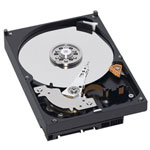 |
Hard drive capacity continues to grow, as you can see in our selection of the Western Digital Caviar 500GB for our entry system. It seems a waste to choose a lower HD capacity when 500GB is now available for around $60 - even from www.amazon.com. While there are differences between hard drives, outside of running benchmarks most people aren't likely to notice the difference in performance between Western Digital, Seagate, Samsung, Hitachi and other major brands. All are worthy of consideration if the price per gigabyte (or terabyte) is right.
 |
For the optical drive we went for value with the dependable Samsung 22X DVD. With the rise of the 25GB/50GB Blu-ray burners, DVD writers have continued to drop in price. A DVD writer that supports double-layer and 22X DVD writes for $25 is a bargain indeed.
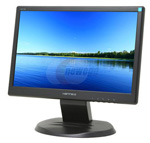 |
The last major component to discuss is the display, and here the tilt was toward price. $99 is a really low price for an LCD monitor, and the Hanns-G is a 17" widescreen that supports a native resolution of 1440x900. This is the resolution supported by most 19" and 20" widescreen monitors. You will not give up resolution with this monitor, but things will be a bit smaller.
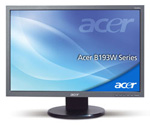 |
If your budget allows, you can choose the 19" Acer X193Wb with the same 1440x900 resolution at $120, or a 21.5" Viewsonic VX2233wm with true HD 1920x1080 resolution at $170. 21.5"/22" True HD is today's sweet spot, since the next step up to 23.6"/24" starts around $250. If your budget can stretch to $170, that is money well spent on a 21.5" 16:9 HD widescreen display.










66 Comments
View All Comments
v12v12 - Wednesday, March 18, 2009 - link
I agree most of these posts are the nerds-nit-pick special! I'm sorry but if you're whining about $15 here and $20, get a clue and get a REAL JOB or start saving/studying for certs/school and make some real money.This shoe-string budget crap, for a so-called "gamer" box is plain stupidity. If you're hurting over $600-800 MAX limit, sounds like you have your financial PRIORITIES out of whack! Nobody is "gaming" for long with a $600 box. It's a fool's investment and will have you stuck with a sub-par performing machine, rapidly. Oh and don't even think about resale, you're stuck with the low-end junk.
While mirroring the car market: UPSCALE cars/PC builds lose a small percentage of value as soon as you buy them, BUT they hold top value over the coming months Vs this low-mid-level junk that immediately loses an chance of resale value. Have you seen how many stupid people are on Ebay that overbid even for those relic 8800s?!
Who's going to buy your used, non-warranted (many manu's do require proof of purchase these days) 2nd rate card for ~$30 less than RETAIL? Pawning that off to ebay noobs is your only hope to recoupe your losses. Be smart people.
If you're maxing out around $600 = STOP and rethink your finances... $800? Might as well save and get an Icore. Geesh, oh and don't forget about TAXES + initial cost of hardware lol. Not to mention if something goes wrong and you have to RMA = how you gonna afford S/H if you can barely afford a paltry $600-800?
Flame time...
nubie - Tuesday, March 17, 2009 - link
I did get an e5200, for $59.But the motherboard I chose was not using single channel ram, or onboard video. I got an 8600GTS (the GTS is important, it has much more memory bandwidth - 2000mhz DDR3) for $43.
I would like to note that new systems with any sort of budget should be built with a quad-core (unless you need that 4.0ghz clocked Wolfdale for gaming of course.) The Q6600 is only $160 on ebay, and it is a really solid performer.
Kudos to showing how to build a system for people new to the task (and it is infinitely better than letting the newbs pick their own stuff, like 3GB of ram and a 9800pro for example.)
I guess ultimate hard-core system building isn't your cup of tea, maybe we need a "Reader's Rigs" section where we can duke it out with budget builds to see what can really be done. (I would cheat, there are P6N OEM boards for $40 on ebay, and MSI should RMA them for functionality with 45nm processors, it already took a Celeron 440 to 3.33ghz without even a voltage bump!! Ironically Speedstep now starts at the 2.0ghz rating of the chip, so it cycles up less than before.)
Knowname - Tuesday, March 17, 2009 - link
The only future proof quad cores right now are the i7's, even the Phenom 2's will choke under a very taxing 4-core+ program. The proof is in the cache, where even the Phenom's 6mb (shared) is just too little for a fully multicore aware program. It is for this reason that the Core2Quad's 2mb or 4mb cache per core is just TERRIBLE future proofing.Then again, you have to ask yourself... just how much future proofing do I need? When we are in an era of replacing ENTIRE computers every 9 months.
Knowname - Tuesday, March 17, 2009 - link
well my point was it may actually be better for somebody looking to future proof at these prices to buy a e8xxx rather than a q6xxx... JMO.nubie - Wednesday, March 18, 2009 - link
Well, for these prices I would recommend that somebody wait for i7.If they are really on a budget there are 650i OEM motherboards for $40 on ebay, and look for a good deal on a Wolfdale ~$60-70, or overclock the heck out of a Celeron 430/440 (my last two were fine at 3 and 3.33ghz respectively.)
My definition of budget is being out of steady work for ~3 years, so the value for money needs to be very high, and the e5200 and Core2 Celeron are very good in that regard, with 70% overclocks the norm.
My budget systems come in around the $300-350 mark, not the $500+ segment, and yet I would say that they offer the same functionality for gaming and general use (and as I said, I would go Q6600 if I could, probably will when everyone moves to i7 and the prices drop below $100)
7Enigma - Tuesday, March 17, 2009 - link
Great deal I saw on Fatwallet the other day if you are a student (or know someone whom is). This would drop another $35 bucks which would allow for some much needed flexibility especially on the entry-level systems where that difference is ~7% of the build price.Oh to be a student again.....
http://www.microsoft.com/windows/products/windowsv...">http://www.microsoft.com/windows/products/windowsv...
7Enigma - Tuesday, March 17, 2009 - link
Wanted to mention that page also includes Office Ultimate 2007 for $60 if you are an active student. Not bad for someone who needs Office (I personally use OpenOffice).*Seems like the Vista Ultimate might be an upgrade version and not the full version. It's difficult to confirm as the main page that is linked doesn't mention which version but if you click on it it shows upgrade with sp1. Someone less of a hot deal if it's the upgrade only.
7Enigma - Tuesday, March 17, 2009 - link
Anand see if your weight in the tech industry will allow you to aquire for testing one of these puppies:http://www.dailytech.com/Fusionio+Claims+Worlds+Fa...">http://www.dailytech.com/Fusionio+Claim...lds+Fast...
I'd love to see it put through its paces, even though it is in a completely different class ($5000 for lowest model).
scwtlover - Monday, March 16, 2009 - link
For the entry-level AMD system, you recommend G.Skill 800-DDR2 RAM at $37. It's timings are 5-5-5-15 and 1.8V, but it does not come with a heat-spreader. Should we infer that a heat-spreader is unnecessary?mushkin 1.8V memory, with 5-4-4-12 timings and a heat-spreader is available, after rebate, for only $3 more.
And, how significant is 1.8V? At 800-DDR2 Newegg sells OCZ with a heat-spreader and 5-4-4-15 timings, but 2.1V. It's $24 after rebate. Corsair's offering, after rebate, is only $20. It has heat-spreaders, and is 1.9V. The timings are 5-5-5-18? How significant is 12 v. 15 v. 18?
If we look at 1066 DDR2 RAM, the OCZ sticks you recommend cost $28, after rebate. You advise: "Just be sure to look for RAM with better timings if you can afford it." The OCZ is CAS 7, with 7-7-7-20 at 2.0V. For $30, after rebate, Newegg sells OCZ2P10664GK. It's CAS 5, with 5-5-5-18 timings at 2.2V. For $8 more than that, you can get the same RAM plus a bundled XTC memory cooler. How important is voltage versus timings? For $34, that is, $6 more than the OCZ, Newegg sells OCZ Reaper with 5-5-5-18 timings at 2.1V
Wesley Fink - Monday, March 16, 2009 - link
Traditional "Plate stuck on each side" heatspreaders do almost nothing to cool the ram. in fact sometimes they hold in heat and are actually worse than no heatspreader at all. Some more exotic HS designs used in more expensive RAM that is run at higher voltages sometimes do help cool the RAM.The OCZ is DDR2-1066 with slower timings and the 5-5-5 and faster is DDR2-800. The same 7-7-7 1066 memory often runds fine at 5-5-5 at DDR2-800. Higher speed usually means slower timings. If you can find faster RAM like DDR2-1066 at CAS 5 at a similar price then buy it.
As I said in the article quality RAM at the same speed can be selected from any of the major memory providers. Comparing two at the same price look at highest speed combined with reasonable timings. If the two memories are the same price and the same speed then timings (and warranty support) should be your main considerations.
We try to select reasonable choices we have personal experience in using at AT. But there are many rebates in memory right now - and they change daily. You need to be flexible if you are looking for memory that is the best value.